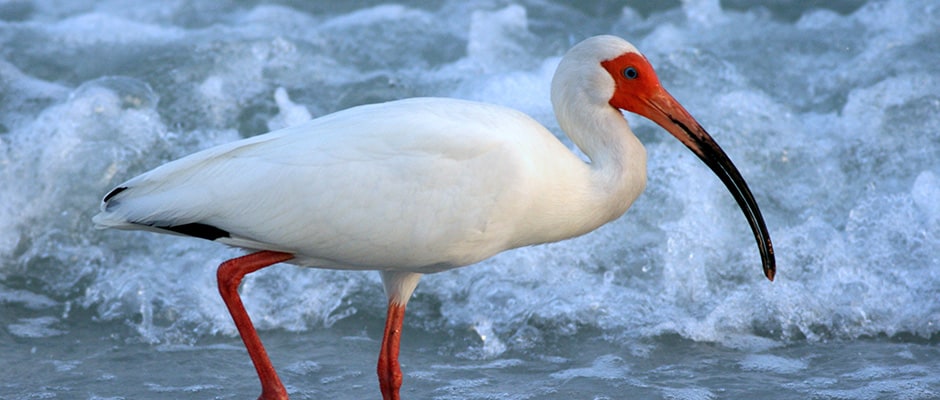Share this article
Florida Releases Draft Plan for Conserving 60 Species
Florida’s state wildlife agency has created a draft plan to manage 60 species of mammals, birds, reptiles, amphibians, fish and other aquatic life.
The Imperiled Species Management Plan released last week by the Florida Fish and Wildlife Conservation Commission mixes conservation measures targeted towards specific species as well as broader measures that look to conserve or improve habitats that affect a number of different plants and animals.
“Florida has a diversity of imperiled species, from the American oystercatcher with its striking black and white plumage and bright orange bill, to the Santa Fe cave crayfish that lives entirely in below-ground aquatic caves,” said Laura Barrett, the coordinator of the state agency’s new plan, in a press release.

The key ringneck snake is one of the 60 species included in a new draft plan for the conservation of 60 species.
Image Credit: Kevin Enge, Florida Fish and Wildlife Conservation Commission
“With this plan, the FWC invites our many partners and the public to play prominent roles in conservation of imperiled fish and wildlife,” she continued. “Effective long-term stewardship of 60 species in this rapidly growing state requires all of us to work together on critical issues such as species monitoring, habitat conservation and education, and outreach efforts.”
Of the 60 species the plan looks at, 37 will be continued to be listed as threated in the state — five as species of special concern, three species that are listed federally on the Endangered Species Act and another 15 that are being removed from the state’s imperiled species list.
The plan is open for public comment through the agency’s website through March 13.
The following species are included in the plan:
Mammals: Big Cypress fox squirrel, Eastern chipmunk, Everglades mink, Florida bonneted bat, Florida mouse, Homosassa shrew, Sanibel Island rice rat, Sherman’s fox squirrel and Sherman’s short-tailed shrew.

A limpkin and chick. The limpkin is one of the 60 species included in a new draft plan for the conservation of 60 species.
Credit: Jack Rogers, Florida Fish and Wildlife Conservation Commission
Birds: American oystercatcher, black skimmer, brown pelican, Florida burrowing owl, Florida sandhill crane, least tern, limpkin, little blue heron, Marian’s marsh wren, osprey (Monroe County population only), reddish egret, roseate spoonbill, Scott’s seaside sparrow, snowy egret, snowy plover, Southeastern American kestrel, tricolored heron, Wakulla seaside sparrow, white-crowned pigeon, white ibis and Worthington’s marsh wren.
Reptiles: Alligator snapping turtle, Barbour’s map turtle, Florida brown snake (lower Keys population only), Florida Keys mole skink, Florida pine snake, Key ringneck snake, Peninsula ribbon snake (lower Keys population only), red rat snake, rim rock crowned snake, short-tailed snake, striped mud turtle (lower Keys population only) and Suwannee cooter.
Amphibians: Florida bog frog, Georgia blind salamander, gopher frog and Pine Barrens treefrog.
Fish: Atlantic sturgeon, blackmouth shiner, bluenose shiner, crystal darter, Key silverside, harlequin darter, Lake Eustis pupfish, mangrove rivulus, saltmarsh topminnow and Southern tessellated darter.
Corals: Pillar coral.
Crustaceans: Black Creek crayfish and Santa Fe cave crayfish.
Mollusks: Florida tree snail.
Header Image:
The white ibris is one of the 60 species included in a new draft plan for the conservation of 60 species.
Image Credit: Florida Fish and Wildlife Conservation Commission








